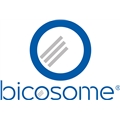- Inici
- Centre
- Instituts
- Biblioteca
- Projectes
- Igualtat
- Comissió d'Igualtat
- Sala d'alletament
- Lavabos sostenibles per a un ús menstrual
- III Pla d'Igualtat entre Dones i Homes al Consell Superior d'Investigacions Científiques
- Protocol de prevenció i intervenció davant l'assetjament sexual i l'assetjament per raó de sexe al CSIC
- Documentació bones pràctiques
- Exposicions
- Intranet CID
- Contacte
Centre d'Investigació i Desenvolupament
PhD Thesis Defense by Elena Cerro Gálvez (IDAEA-CSIC) at the ETS d'Enginyers de Camins, Canals i Ports of Barcelona

PhD Thesis Defense by Elena Cerro Gálvez (IDAEA-CSIC) on 19th September at the ETS d'Enginyers de Camins, Canals i Ports of Barcelona.
Title: Analysis of the impact of organic pollutants on marine microbial communities
Speaker: Elena Cerro Gálvez
Directors: Dr Maria Vila Costa (IDAEA-CSIC) and Dr Jordi Dachs Marginet (IDAEA-CSIC)
PhD Thesis Committee: Dr Marinel·la Farré (IDAEA-CSIC), Dr Carles Borrego (ICRA) and Dr Olga Sánchez (UAB)
Date: Thursday, 19th September 2019
Time: 11:00 am
Venue: Edifici C1 Aula 002 - Campus Nord. Escola Tècnica Superior d'Enginyeria de Camins, Canals i Ports de Barcelona. C. Jordi Girona 1-3
Abstract:
Increasing amounts of hundreds of thousands of organic synthetic chemicals are currently in use, many of them intentionally or unintentionally emitted to the environment by human activities, posing a threat to ecosystems health. The most apolar and persistent fraction of this mixture of organic pollutants (OPs) reaches marine ecosystems mainly through riverine and continental run-off inputs, and as well by diffuse atmospheric inputs, causing a chronic and ubiquitous pollution by anthropogenic dissolved organic carbon (ADOC). ADOC is mostly composed by combusted or un-combusted from fossil fuels (mostly aliphatic and aromatic hydrocarbons), legacy persistent organic pollutants (POPs), and organic pollutants of emerging concern (OPEC), many of which are still being characterized. Although individual concentrations of anthropogenic OPs are in the order of pg/l to ng/l, the myriad co-occurrence of hundreds of thousands of these micropollutants can reach micromolar concentrations. Once in seawater, ADOC compounds enter into the biogeochemical cycle of dissolved organic carbon (DOC), mainly pivoted by microorganisms. Marine microbiomes play a major role in the breakdown and remineralization of some ADOC compounds, thus determining their fate in seawater while using them as nutritional source. Concurrently, microorganism are also prone to suffer toxic effects of ADOC. However, it is unknown whether the low in situ concentration of ADOC is affecting the structure and functionality of marine microbiomes since chemical pollution remains as the most poorly characterized vector of global change due to analytical challenges and lack of attention by the Earth System scientific community. The main aim of this thesis was to combine functional genomic tools with quantitative biogeochemical approaches under manipulated conditions to determine the impact of background concentrations of ADOC on the marinemicrobial communities (mostly the heterotrophic fraction) in contrasted coastal systems, both in terms of community structure and functionality, comparing communities used to live in different trophic conditions and baseline pollutant concentrations.
In order to fulfil the proposed objectives, several OP amendment experiments were performed using different OP additions at concentrations within the range of their environmental variability in contrasted coastal sites, including NW Mediterranean, the Arctic and the Antarctic seawaters. On one hand, the effect caused by four families of pollutants individually (hydrocarbons such as alkanes and polycyclic aromatic hydrocarbons (PAHs), and emerging pollutants such as organophosphate esters (OPEs) and perfluoroalkyl substances (PFASs)) was tested in five marine bacterial communities of the northwestern Mediterranean,and the specific effect of perfluorooctanesulfonate (PFOS) and perfluorooctanoate (PFOA) acids (both corresponding to the family of PFASs) in communities from Deception Island (Antarctica). On the other hand, experiments were conducted to observe the effect of an operationally defined ADOC, which consisted of the non-polar extract of in situ seawater, to bacterial communities from coastal waters with contrasted environmental conditions, at Livingston Island (Antarctica), Svalbard (Arctic), Barcelona and Blanes (NW Mediterranean).
The results provided during this thesis are the first reporting the effects to natural marine heterotrophic bacterial communities due to a chronic background pollution in the oceans. They suggest that the baseline ADOC pollution ubiquitously present in the oceans, two orders of magnitude lower than DOC, is modifying the structure of bacterial communities and their functionality, and the strength of the impact varies greatly depending on the environmental conditions. Bacterial responses were taxon-specific. ADOC induced the growth of rare taxa in short term incubations of 24 h under in situ conditions, and also modified the activityof some metabolic pathways, such as those related to hydrocarbon breakdown, bacterial respiration and PFOS desulfurization. These findings suggest direct impacts of ADOC to the dynamics of ocean biogeochemical cycles of essential elements such carbon and sulfur. The relevance of this perturbation will need to be constrained with future research. Results also showed that marine microorganisms use simultaneous strategies to cope against toxic effects of ADOC that are taxon-specific, including modifications of membrane permeability, activation of efflux pumps, and increase of extracellular enzymatic activities.
Importantly, the bidirectional interaction between ADOC and marine bacteria is closely modulated by environmental variables and conditions (nutrients availability, water temperature, etc.), as well as previous exposure to pollutants probably increasing the plasticity of the community, thus facilitating an adaptation of the communities to an environmental stressor such as ADOC. These results call for including environmental relevant information, such as the trophic status of the water, in models of risk assessment predicting the persistence and toxicity of ADOC in surface waters.
Understanding the nature of ocean life and the patterns of its structure and functionality represents a difficult challenge. Nevertheless, there is an urgency to develop a greater knowledge of marine environments as links between ocean processes and terrestrial anthropogenic life. This thesis demonstrates that the perturbation of the composition of the organic component of the biosphere, caused by thousands of chemicals at low concentrations, has the potential to affect the major biogeochemical cycles, and this arise as a vector of global change, which is also influenced by human activities.
Date:
divendres, 6 setembre 2019










